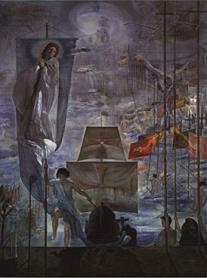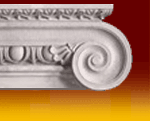|
Surrealism was a European movement founded by Andre Breton in 1924. It is a style which is primarily concerned with using
the subconscious mind to create illogical or distorted images. It was largely influenced by the theories of Freud and Jung,
and in some respects was similar to the 19th-Century movement of Symbolism. Surrealism was also similar to Dadaism, and attracted
many of the artists of that movement. Most Surrealists of the time were left wing (as were most intellectual groups), and
consequentially Salvador Dalí, the most famous of Surrealist artists, eventually disassociated himself with the group. Other
Surrealist artists included Max Ernst, Giorgio de Chirico, Andre Brenton, Jean Arp, Man Ray, Joan Miro, and Rene Magritte.
Surrealism centred mainly in France and the United States. Initially, France had the largest gathering of Surrealists; however
after the outbreak of World War II, when Germany occupied France, most Surrealist facilities centred in New York.
Early in the movement, Surrealism appeared to be purely literary, and an extension of Dadaism. By 1924, however, the Dadaist
movement had deteriorated completely and many artists who had previously participated in this movement turned to Surrealism.
The ideals and concepts Surrealism upheld were soon conveyed through the use of painting, many of the works conveying dreamlike
or nightmarish qualities. This was one of the main goals of the Surrealists: to depict the images presented to the subconscious
in sleep. This is how they intended to convey to the public their theory that the mind has its own creative ability to produce
artistic meaning. Surrealists believed that the interpretation of art should be through emotions and intuition rather than
logic and intellect.

"Discovery of America by Columbus" (1958) - Salvador Dalí
This painting has several of the traditional attributes of Surrealist paintings: images that are illogical and which are
not immediately or necessarily related to each other, but can be linked emotionally to the fundamental idea of the painting
as intended by the artist
Back
|

